
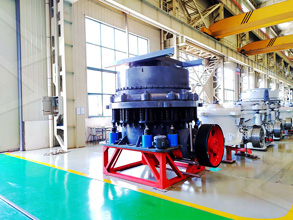
Environmental issues in fish processing projects primarily include the following: • Solid waste and byproducts • Wastewater • Water consumption and management • Emissions to air and energy consumption Solid Waste and Byproducts Fish processing activities2015年12月31日· 40 Environmental and Waste Management 19 41 Environment Management Storage and Disposal of Plant Supplies 19 published the BAPSEAFOOD PROCESSING PLANT STANDARDS

2018年6月1日· Manufacturing facilities are subject to several environmental standards and regulations, but it’s not always easy to2023年6月13日· During inspections, the FDA may collect samples from the environment in a building where foods are produced (a manufacturing plant or a commercial kitchen, forEnvironmental Sampling | FDA

Environmental Standard Environmental standards, norms, recommendations, and laws, and also the registration of substances for lawful use, are all influenced by EEC review2021年6月1日· The aim of this study was to highlight the strengths and weaknesses of the EMP in a select dairy processing plant The results of this study outline the selection of sampling locations, theMicrobiological environmental monitoring in food

2021年12月1日· Indicator microorganisms correspond to organisms that reflects the microbiological flora condition of a food or the environment of the processing plant (2021年10月16日· Processing environment monitoring is gaining increasing importance in the context of food safety management plans/HACCP programs, since past outbreaksProcessing environment monitoring in low moisture food
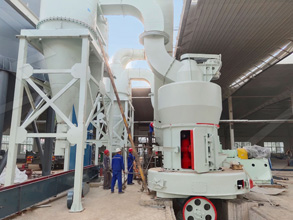
2014年8月5日· Sanitation encompasses many areas and functions within a food processing plant, even when not in production However, certain sanitary proceduresOperational and sanitation procedures appear to have a significant impact on environmental contamination, with both plants having similar prevalence values for rawGood Manufacturing Practices for the 21st Century for Food

Plant Construction Standards National guidelines for the construction and operation of dairy processing plants are available from the Canadian Dairy Information Centre Follow the appropriate links listed under Natio nal Dairy Code – Part II and III, and Interpretive Guidelines For your convenience, key requirements are listed below: FloorsThe Seafood Processing Standard (SPS) is the only seafoodspecific standard for processing plants GSA works with industry experts who understand seafood and the audit process at all steps in the supply chain, including the processing plant GSA also works with the marketplace and producers to help meet responsible sourcing demands andSeafood Processing with Standards

2009年5月1日· A meatprocessing plant is applying for consent upstream from the abstraction point of a water treatment plant The proposed plant requires a consent to discharge contaminated water into the river The2023年6月13日· FDA investigators use sterile sponges or swabs to collect these samples from both food contact surfaces (eg, slicers, mixers, utensils or conveyors) and nonfood contact surfaces (eg, floorsEnvironmental Sampling | FDA

2023年11月30日· The following are the stationary sources of air pollution for the chemical production and distribution industries, and their corresponding air pollution regulations and guidelines To learn more about the regulations and guidelines for each industry, just click on the links below National Emission Standards for Hazardous Air Pollutants –2024年1月10日· Rulemaking History 2004 Rule Final Rule Federal Register notice (September 8, 2004) Technical Development Document for the Final Effluent Limitations Guidelines and Standards for the Meat and Poultry Products Point Source Category (pdf) (29 MB, 2004, 821R04011) Describes industry processes, pollutants generated,Meat and Poultry Products Effluent Guidelines | US EPA

2014年3月28日· 27 March 2023 Added a revised SR2018 number 7: new and existing, low risk, stationary medium combustion plant and a new standard rules permit SR2022 number 9: new and existing, low risk2020年10月22日· Environmental Pathogen Monitoring Robust and effective environmental monitoring programs (EMP) measure the success of a dairy plant pathogen control program by assessing the conditions during and after production EMP is a means to verify that your preventive controls, GMPs, sanitary design and sanitation programs areCONTROLLING PATHOGENS IN DAIRY PROCESSING ENVIRONMENTS

2023年7月19日· The following are the stationary sources of air pollution for metal production industries, and their corresponding air pollution regulations National Emission Standards for Hazardous Air Pollutants – NESHAP New Source Performance Standards – NSPS Alternative Control Techniques ACT2020年1月7日· The USDA’s HACCP regulation puts sanitation—cleaning and sanitizing—in its proper perspective: Sanitation maintains or restores a state of cleanliness and promotes hygiene for prevention of foodborne illness It is an essential prerequisite program for food safety The Preventive Controls Regulation for Human Food found in 21 CFR Part 117The basics of cleaning and sanitation in food plants

Plant A, which had a higher environmental contamination prevalence value, may have more potential reservoirs for L monocytogenes, as it has a larger production volume, is housed in an olderEnvironmental standards Hans Wiesmeth, in Implementing the Circular Economy for Sustainable Development, 2021 Abstract Environmental standards are approximations to unknown efficient levels of the associated environmental commodities This is described in detail in the first section of this chapter, which also deals with the consequences ofEnvironmental Standard an overview | ScienceDirect Topics
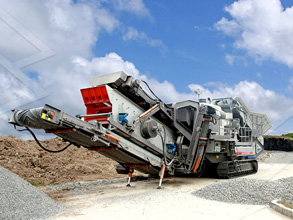
2021年7月13日· EPA promulgated the Dairy Products Processing Effluent Guidelines and Standards (40 CFR Part 405) in 1974 and 1975 The regulation covers direct direct A point source that discharges pollutants to waters of the United States, such as streams, lakes, or oceans and indirect indirect A facility that discharges pollutants to a publicly2019年12月4日· New emissions, monitoring and efficiency standards will help national authorities to lower the environmental impact of the waste incineration sector in the EU This sector represents more than 500 installations and treats around 30 % of the EU's municipal waste as well as other types of waste such as hazardous wastes or sewageNew EU environmental standards for waste incineration

Mineral processing mobile and static plant operator Reference Number: ST0144 Details of standard Occupation: The main duties and tasks of mineral processing mobile and static plant operators are to operate either fixed or mobile heavy plant equipment efficiently and safely complying with current legislation, company policies and proceduresPetrochemical Process Standards Leadership Group (PPSLG), which replaces BSTG, whose working life ends with the publication of this report PPSLG will also oversee the monitoring of and reporting on compliance with all of their recommendations, as well as those of BSTG Safety and environmental standards for fuel storage sites 4 of 118Safety and Environmental Standards for Fuel Storage Sites
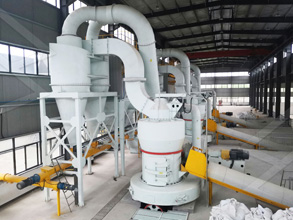
Introduction Engineering design and construction of a food processing facility requires a great deal of planning Information must be collected from many sources and combined into documents that are simple to read and share with others Planning sessions should not involve persons that represent all aspects of facility activity2013年8月2日· Yes Raw poultry is not sterile Holding raw poultry between 40 °F and 140 °F (44 °C and 60 °C) allows bacteria to grow Minimizing the time between grocery store and refrigerator and between refrigerator and cooking, will minimize the risk of bacterial growth [ Top of Page]Poultry Processing: Questions & Answers | Food Safety and

2014年8月5日· The Impact of FSMA FSMA is easily the biggest reform of US food safety laws since the 1930s The act mandates stricter measures for food made in the US, while also giving FDA unprecedented authority in enforcing these regulations Of most importance is a shift in the focus of federal regulators from responding to contamination to2020年8月18日· 3 The quality of surface waters shall be maintained in a safe and satisfactory condition for the following uses: Water Uses to be Proceeded, (a) agricultural, industrial, and public water supplies after reasonable treatment, except where natural salinity precludes such uses ; (b) wildlife, fish and other aquatic life: (c) recreation ;NATIONAL ENVIRONMENTAL (SURFACE AND GROUNDWATER QUALITY

2020年10月19日· Ensuring the air that is introduced and clean to the standards required is essential so that there is reduced particle levels in your facility REHVA recommends that most facilities should utilize ePM2013年10月18日· Environmental impact assessment (EIA) in food processing is carried out to quantify and understand the effects that a new development will have on its surroundings It can be used by authorities, policymakers, developers and food producers to make decisions on how best to produce food for an increasing world population withoutEnvironmental Impact Assessment (EIA) Sustainable Food Processing
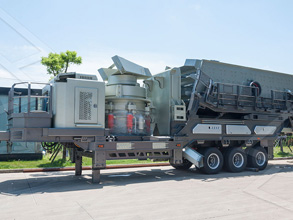
Iron Ore Mining and Ore Processing (Omitted) 19 Calcium Carbide: 20 Carbon Black: 21 Coke Oven Plants Battery Manufacturing Industry: 82 Environmental Standards for Gas/NapthaBased Thermal Power Plants: 83 Standards/Guidelines for Control of Noise Pollution FromStationary Diesel Generator2018年11月5日· Sampling and analysis occur along the milk processing train: from collection at farm level, to intake at the diary plant, the processing steps, and the end products Milk has a short shelf life; however, products such as milk powders have allowed a global industry to be developed Quality control tests are vital to support activities forThe Dairy Industry: Process, Monitoring, Standards, and Quality
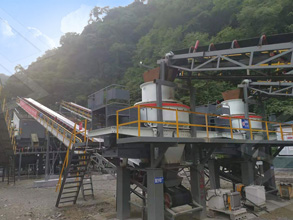
2014年3月10日· EPA promulgated the Mineral Mining and Processing Effluent Guidelines and Standards ( 40 CFR Part 436) in 1975, and amended the regulation in 1976, 1977, 1978, and 1979 The regulation covers wastewater discharges from mine drainage, mineral processing operations and stormwater runoffMeat and poultry processing plants are premises where meat (including game meat) for human consumption is processed, treated, boned, cut up, packed, packaged or stored This includes raw meat, the production of readytoeat (RTE) meat such as ham, beef jerky and biltong, and uncooked comminuted fermented meat (UCFM) products such as salamiMeat & poultry processing plants | NSW Food Authority

Potential Human Health and Ecological Risks of Production, Processing, and Recycling of REEs 61 61 Generalized Conceptual Site Model for Environmental Risk from a REE Mine and Mineral Processing Plant 62 611 Contaminant Release and Transport 66 612 EPA Studies of HardrockMine Environmental Risks 610 62 Pathway and Exposure2016年2月1日· You may need to apply to the Environment Agency for an environmental permit if your business uses, recycles, treats, stores or disposes of waste or mining waste This permit can be for activitiesWaste: environmental permits GOVUK

Standard Operating Procedures for the FoodProcessing Industry LOG10®, LLC 2402 Sykes Blvd, Ponca City, OK 74601 5803047953 SOP development, review & implementation is crucial to ensure a clean and sanitary foodprocessing facility and avoid pathogenic transmission Learn more2024年1月8日· Asphalt Processing and Asphalt Roofing Manufacture: New Source Performance Standards (NSPS) Hot Mix Asphalt Facilities: New Source Performance Standards (NSPS) Control of Volatile Organic Compounds From Use of Cutback Asphalt WetFormed Fiberglass Mat Production: National Emission Standards for Hazardous AirAsphalt Processing and Asphalt Roofing Manufacturing:

2008年1月1日· This is particularly true for red meat processing; together with the endogenous microbiota of the cattle carcasses, the environmental microbiota of the slaughterhouse heavily impacts the bacterial2019年1月17日· Environmental permits will include conditions to make sure receiving waters meet these standards For example, discharge specific effluent quality numeric limits for parameters such as BOD andWaste water treatment works: treatment monitoring and

In 2018, ECCs were issued to 28 coalfired power plants, 23 oilbased power plants, eight (8) natural gasfired power plants, nine (9) geothermal power plants, 29 hydro plants, 13 biomass power plants, six (6) wind power, 18 solar, two (2) petroleum refineries, and one (1) gas processing plant 2 Environmental Compliance and Monitoring2015年5月1日· 1 Introduction Legislation is continuously refining the needs for the removal of various pollutants from domestic sewage To this end, the Ministry of Environmental Protection of the People's Republic of China (MEP) introduced the Discharge Standard of Pollutants for Municipal Wastewater Treatment Plants (MEP, 2002a), updated from theEnvironmental implications of increasingly stringent sewage

Introduction Throughout the COVID19 pandemic, meat processing plants (MPPs) have proved vulnerable to transmission of SARSCoV2, and outbreaks have affected their workers worldwide ()Viral transmission is difficult to control in these settings because of a combination of factors including environmental conditions, the nature of the work, and2019年3月1日· For such plants Central Electricity Regulatory Commission provides tariff rate of 742 INR/kWh ($ 0114/kWh) considering the capital cost of plant 1185764 crore/MW ($ 182 million/MW) (after subsidy 885764 crore/MW or $ 136 million), along with operating and maintenance cost of 4997 lakh/year ($ 0076 million/year) (escalation rateEconomic and environmental evaluation of rice straw processing

2021年10月16日· The recalls, withdrawals and safety alerts for the EU member states and US have been reported by RASFF (2020) and the FDA (2020) Table 32 shows that for microbial pathogens and LMF, there were 447 and 51 alerts in the EU and US, respectively, in the period from 2012 to 2017 The majority of the alerts were related to SalmonellaFOOD PROCESSING PLANT REQUIREMENTS Nebraska Department of Agriculture Food Safety and Consumer Protection State Office Building PO Box 95064 Lincoln, Nebraska 68509 (402) 4713422 wwwndanebraskagov Food Processing Plant Requirements Effective date July 21, 2016 FOOD PROCESSING PLANT REQUIREMENTS Nebraska

2023年3月28日· New source performance standards (NSPS) implement Clean Air Act (CAA) section 111 (b) and are issued for categories of sources which EPA has listed because they cause, or contribute significantly to, air pollution which may reasonably be anticipated to endanger public health or welfare The primary purpose of the NSPS is to2020年5月15日· Due to the dynamic development of industry, related to the processing of plant materials and a subsequent significant increase in the number of employees working in this kind of industry, the indoor air quality is of great importance for the human health The premises of plants processing plant materials are a specific environment, related toBioaerosols at plants processing materials of plant origin—a
